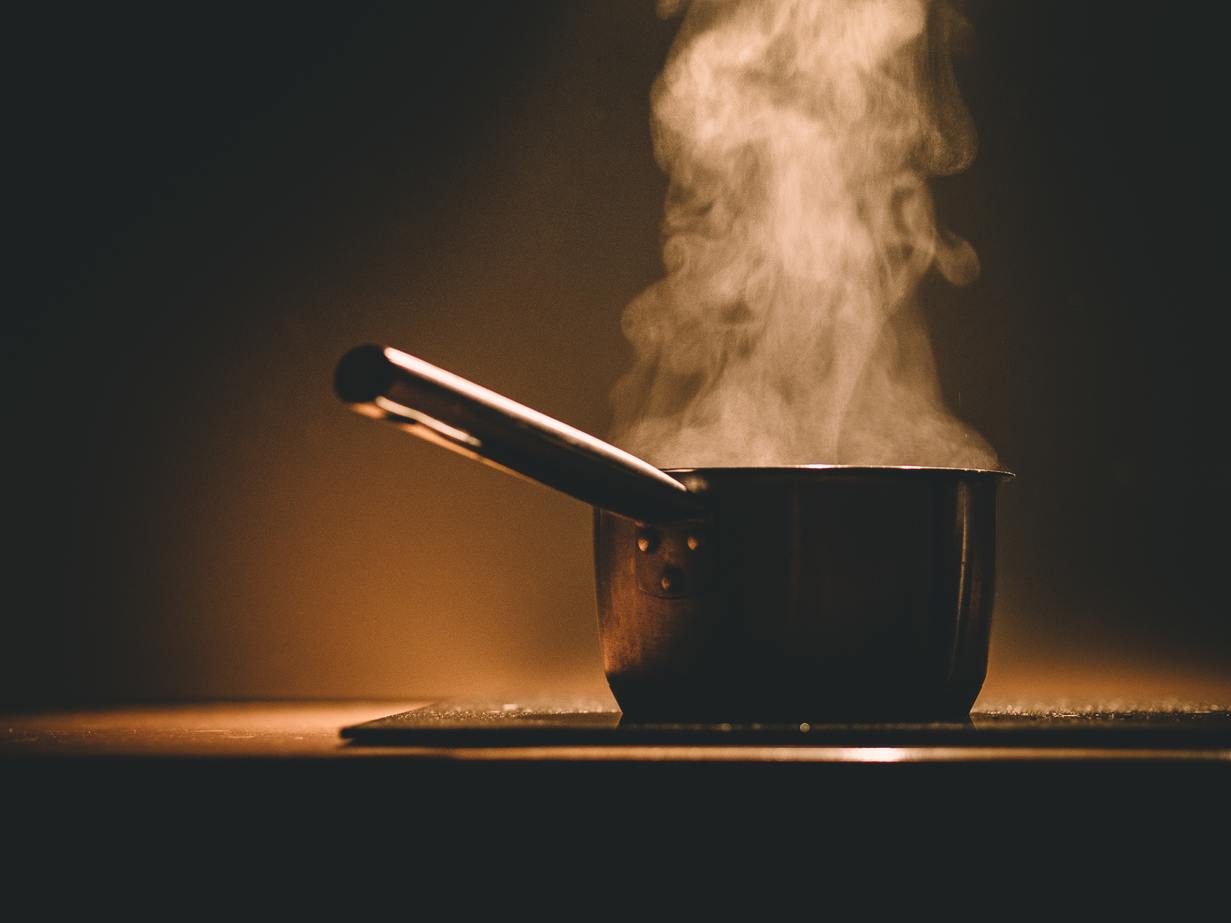Kitchen Planning
Choosing between ducted and recirculating cooker hoods
17.05.2018


The key to an efficient kitchen partly lies in the appliances and fixtures you choose to install. Every feature in your kitchen should be working in tandem to cultivate a functional environment – one that encourages a better workflow and makes you feel more comfortable on a daily basis. An effective ventilation system in your kitchen will do exactly that by removing nasty fumes, improving air flow, clearing away smoke, extracting hot air and replacing it with cooler air. Overall, this helps make your kitchen a more desirable place in which to cook and socialise, eliminating common sources of discomfort like unpleasant odours and stifling heat.
Kitchens generally make use of cooker hoods because they bring ventilation to the source, sucking up and filtering all the smoke and grease that is created during the cooking process directly from the hobs and ovens below. However, while most kitchens feature a cooker hood, not all kitchens have the right cooker hood. Even if they look beautiful and make an impression, they are useless if they are not suited to the pace and workload of your kitchen.
The two main types of cooker hood to choose between are ducted and recirculating hoods. Each has individual mechanisms and benefits so we hope to clear those differences up here. Of course, there are other factors to consider (such as the size and style of your cooker hood), but decision number one should be about which mechanism suits your kitchen best.
The difference between ducted and recirculating cooker hoods is simple. With ducted hoods, air is extracted from the kitchen through a pipe that leads from the hood to an outside vent, whereas with recirculating hoods, air is extracted through a filtration system built into the hood, working to remove any grease and odour from the air before releasing it back into the kitchen. The filter in a recirculating hood often makes use of activated carbon that fully purifies the air, ensuring a smokeless and odourless kitchen (although not one free from fumes altogether).
Ducted hoods will have a higher rate of extraction due to the fact that air is not released back into the kitchen but completely removed from the kitchen. The more bends in the ducting pipes, the less air it is able to extract from the room. Fewer bends and shorter ducts, however, guarantee a better flow of air throughout the system. As we shall see in the discussion below, the efficiency of a recirculating hood depends on a number of factors, such as size and brand.
Bear in mind that cooker hoods are not only available for installation on walls, but also ceilings, floors and countertops. Many choose to place cooker hoods directly above their kitchen island, usually because their island cooker is the main source of fumes and vapours in the whole room. These hoods can either be ducted or recirculating, depending on the structure of the room. Generally speaking, if the ceiling is already being replaced as part of your kitchen renovations, this presents a great opportunity to install ducts leading from your ceiling into the fresh air.
Perhaps the main factor to consider is the position of your cooker within your kitchen – namely, whether or not it is positioned against an outside wall. Ducted hoods require an external wall, with the duct connecting through to the outside of the building in order to completely remove air. Recirculating hoods are necessary when there is no means of ducting through an external wall, with the mechanism instead filtering and purifying air before pumping it back into the kitchen. This means that you are somewhat restricted in your application of ducted cooker hoods, whereas recirculating hoods enjoy more versatility and can be installed on any type of wall.
Naturally, if hygiene and comfort are your top priorities then ducted extraction is most efficient, ensuring that fumes and odours are removed from the building without the need for filtering. This not only makes for a more cool and comfortable kitchen due to the lack of restricted airflow, but it also removes the need to replace and clean filters on a regular basis. On the other hand, some find that ducted hoods are impractical when they lack the space to install external ducts, instead preferring the compact and all-in-one nature of recirculating hoods. Furthermore, installing ducts in your kitchen can involve additional costs, especially with larger models.
But despite their versatility and lower cost, some find that recirculating hoods can leave a kitchen slightly more humid than ducted hoods due to fact that fumes are filtered and reused, rather than removed from the building. Of course, the air is released back in a purified form, meaning that it is clean. But this does not remove the possibility of humidity and condensation as there are still fumes in the kitchen, albeit hygienic fumes.
Ultimately, whether your cooker hood is ducted or recirculating, you should opt for quality – trusted and acclaimed brands will deliver efficiency regardless of their internal mechanisms. Although ducted extraction may be the best way to remove fumes and odours outright, the best recirculating hoods on the market are able to guarantee practically the same results despite using different methods. Factors such as energy efficiency, ease of use, noise levels and running costs will often depend on the brand you choose rather than the type of extraction.
For a helping hand with designing your new kitchen and a chat with our professional designers, get in touch the award-winning team at Burnhill Kitchens! We are happy to offer you our expertise in functional kitchen design. Our design and consultation process is free of charge, and we’ll work closely with you to devise our ideal kitchen before figuring out the next steps. With our expert team of designers and fitters creating four kitchens a week, you won’t regret giving us a call.